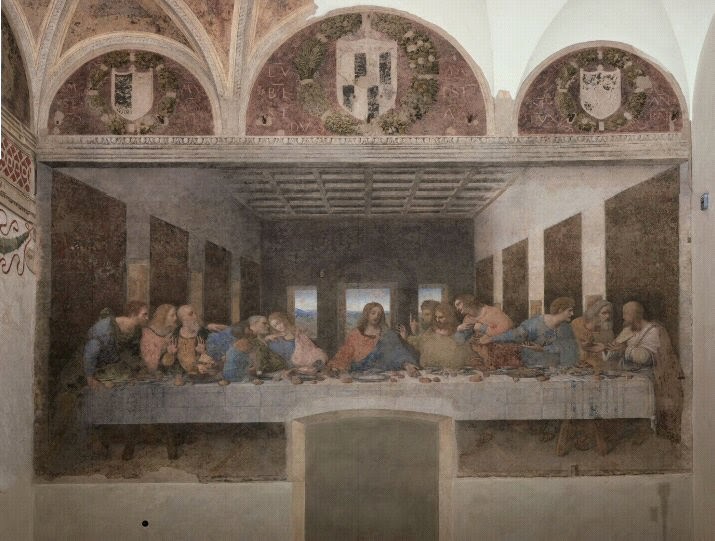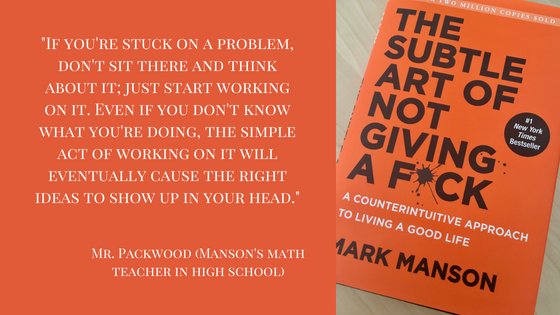I find historical mysteries very interesting. Recently, I read the book about the search for the grave of Richard III (review here some days ago). For breakfast this morning, I read an Annex to the Swedish evening paper
Aftonbladet, which my parents brought on their last trip. It is about secrets to be discovered in famous paintings. Or at least what people think they can read out of it. The most famous painter with supposedly a lot of hidden messages in his painting is Leonardo Da Vinci. It was made really famous with Dan Brown'
The Da Vinci code but also in other books. Let's have a look at some of the paintings mentioned. We start with the most famous painter of them all: Leonardo da Vinci
The Last Supper
It was painted between 1495-98 and ordered by Ludovico Sforza and his wife Beatrice d'Este (
Duchess of Milan as reviewed
here). It was painted directly on the wall in the Monastery Santa Maria delle Grazie in Milan. Leonardo used a new 'dry' technique rather than the traditionally 'wet' fresco painting. The devastating result being that the oil did not stick to the wall, and already in the 16th century the condition of the painting was very bad. During the years, as many as at least 20 artists have tried to 'improve' the condition, leaving not much left of the original. Today only 20% of the painting can be referred to Leonardo.
The holy number of three: The people in the painting are divided into groups of three. Three being the symbol of the Trinity. The number of windows in the room are three. Even Jesus is painted according to the divine code: as a triangle.
The third apostle to the right is holding out his hands. Underneath, bread are spread out on the table. An Italian musicians is said to have spent years to interpret a
hidden musical piece with computer help. He says he has managed to find a requiem inside it. Who knows?
It is said that the apostle to the right of Jesus should be
Mary Magdalene instead of John, due to the female features of the person. However, Leonardo gave John female features since this was the way he was pictured in those days. He was the youngest of the apostles, and was made beautiful and well shaved to highlight this fact. He wears a male costume, and sitting next to Jesus, which we can read in the Bible.
The Holy Grail: There are no traces of the Holy Grail on the table. It is supposed that Jesus drank from this cup during the dinner. The reason is that there never was a Grail(!?) It was an idea that arose during the Middle Ages, and in the world of the Knight novels. Few people believed in it, not even the church. Therefor there is no grail on the table, just ordinary drinking cups. However, if you look above the head of Bartholomew (far left) something is visible that might be a cup. If this is an intentional detail from Leonardo, or a random illusion, is still disputed. Personally, I am not able to see it. Maybe only visible if you see the original.
Mona Lisa
While were talking about da Vinci, let's go to Mona Lisa. It is the most discussed and written about painting in the world. It is
the smile that makes it. Nobody has yet to come up with a reason for this wonderful, enigmatic smile. According to a contemporary painter and historian, Giorgio Vasari, (although he never met Leonardo) she is smiling because Leonardo used to entertain his models with singers, musicians and jesters. Others suggest that Leonardo was playing with the expectations of the spectator. He painted a stereotype, an ideal woman, and a real woman. She is smiling towards us since we are not able to place her into a specific category.
It was painted between 1503-07 on behalf of the Florentine merchant Francesco di Bartolomeo di Zanobi del Giocondo, and the lady is his wife Lisa Gherardini. It took so long time to finish the painting that Giocondo did not want to pay, so Leonardo kept it himself. The story goes though, that in the end Giocondo agreed to pay in spite of the delay. Leonardo gave him
the original, but made another copy of the painting. He continuously improved the copy by changing the features of the woman and idealise it. The original has never been found! Maybe time to check out our attics and storages!
The eyes: what is there. Some researches say that they have found letters in the eyes. In her right pupil, there should be the letter L and V, for the artist of course. In her left there should be the letters B and S or possibly C and E. This has been interpreted as being someone else who was the model. Who? Nobody knows.
Was she a he? There are researchers saying the Mona Lisa is in fact a man. Some state that it should be Francesco himself, others that it is a self portrait of Leonardo. Leonardo should in this case have been homosexual and wanted to portray himself as a woman - without a beard. That would explain the mysterious, enigmatic smile; Leonardo is smiling at our prejudices.
These are some of the mysteries surrounding these two paintings. If one starts to read more, there will probably be hundreds of other signs. I find it quite fascinating though. However, when you read how people several hundreds of years later discuss and dissect paintings, books, writings and actions, I sometimes wonder if we are putting to much into the head of these people. Each academic is of course eager to put something of him/herself into an interpretation, but sometimes I think they see things that are not there.
 |
| The man himself |
When I read interpretations of Emily Brontë's
Wuthering Heights for example, I am really wondering if she had all these designs in her head before writing it? Especially, since her book is highly complex in its story and family tree, for sure there would have had to be some considerations and ideas before starting the book. But all the things that are read into it today? I don't know. The same for Leonardo. He was a highly intelligent man, very knowledgable in a lot of areas. I think he is still considered to be one of the most intelligent and talented men through history. But, as regards his paintings, maybe he just enjoyed painting and it came out in a highly acceptable fashion!
Do you have any ideas about this?








Comments
Post a Comment